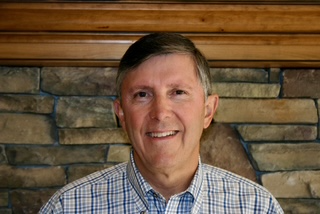Leaving (privacy behind in) Las Vegas
Published 12:00 am Sunday, August 31, 2014

- Monica Almeida / The New York Times file photo Caesars Palace Hotel and Casino is a subject in Adam Tanner’s new novel, “What Stays in Vegas.” Tanner’s objective is to reveal big secrets about how Las Vegas casinos, notably the ones owned by Caesars Entertainment, collect and use data that customers drop when they visit.
“What Stays in Vegas: The World of Personal Data — Lifeblood of Big Business — and the End of Privacy as We Know It”by Adam Tanner (PublicAffairs, Illustrated, 316 pgs., $27.99)
“What Stays in Vegas” is a very far cry from what it promises to be. Adam Tanner’s ostensible objective is to reveal big secrets about how Las Vegas casinos, notably those owned by Caesars Entertainment, collect and use data that customers drop when they visit, just as they drop money. Surely, there’s something sexier about this than there is about the way Amazon analyzes you based on your purchases. Surely there’s something about gambling that makes it different from surfing the Web.
Not exactly. Tanner, a fellow at the Institute for Quantitative Social Science at Harvard and a former Reuters bureau chief, spends a lot of time covering familiar ground. And not all of it is in Nevada. He starts at Harvard Business School, where Gary Loveman joined the faculty at 29 and became known for an article about the financial value of customer satisfaction. As part of his job, he trained executives from Harrah’s, the casino giant. A few years later, he left academia to become Harrah’s chief operating officer and moved to Las Vegas. He may have been the only guy in town who used words like “stochastic” and “vitiate” in conversation.
Harrah and Caesars have since melded into Caesars Entertainment, and Loveman is one of Tanner’s primary sources. Loveman’s development of a loyalty program for Caesars’ best customers has been a success, but it hardly seems revelatory, at least as Tanner describes it. They get coupons and trips and a special lounge and reduced prices at buffets; they get free chips as an incentive to show up frequently. Caesars knows a lot about them. The biggest issue this book addresses is how and when that information should be used.
A lot of “What Stays in Vegas” is about the data digging or online advertising outfits that might sell Caesars information about its customers. These businesses span a wide spectrum, from super-sleazy to merely profit-motivated. At the “creepy” end of things (this word comes up fairly often, with good reason) are blackmail sites like Instant Checkmate, which has sent out messages like this: “RISK ALERT: Very Negative Information Was Added To Your Online File (See what it was).”
Then there is bustedmugshots.com, which posts mug shots to amuse and entertain an online audience, no matter how much harm this inflicts on the people in the pictures. Kyle Prall, who started the site, has no trouble justifying its ethics to Tanner (“It’s a public record: It belongs to the public”) even though Prall is a felon.
What does this have to do with Las Vegas? Not much, though Tanner finds a way to cycle back to Caesars at the end of each chapter somehow.
Among the more alarming points brought up here is that data analysis can extrapolate far more about things like sexual orientation and health conditions than it used to. Tanner demonstrates how easy it is to find a person’s medical records with only a birth date and a ZIP code. As for sexual orientation, thank social networking sites for that: The “likes” on Facebook are fodder for Vegas data crunchers, who think that a man who likes Britney Spears is more apt to be gay than one who likes Shaquille O’Neal. Loveman, now chairman, chief executive and president of Caesars, has had to face ethical decisions about how much personal probing his business should do in order to remain competitive and where the invasion of privacy begins.
At the end of the book, Tanner emphasizes the point that data is valuable, and that we should know what we’re giving away. That issue has already been brilliantly explored by Jaron Lanier in “Who Owns the Future?” a book not included in this one’s somewhat dated bibliography. (Actual entries: David Ogilvy’s 1997 autobiography and Vance Packard’s 1957 “The Hidden Persuaders.”)
But Tanner does include a helpful appendix listing specific ways to guard your privacy, block the sale of private information, encrypt personal documents and more. Here’s a radical one: If you’d like to make a purchase that’s no one’s business, just go to the store. And pay in cash.






